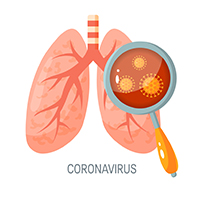 Smart Citations
Smart CitationsSee how this article has been cited at scite.ai
scite shows how a scientific paper has been cited by providing the context of the citation, a classification describing whether it supports, mentions, or contrasts the cited claim, and a label indicating in which section the citation was made.
Effectiveness and applicability of Non-Invasive Ventilation (NIV) in the Emergency Department in acute respiratory failure due to Sars-CoV-2 pneumonia
Treatment of de novo acute hypoxic respiratory failure is not recommended by current Non-Invasive Ventilation (NIV) guidelines as it does not seem to improve patients outcome. Many cases of acute hypoxic respiratory failure associated with Sars-Cov2 infection (SARI) have been observed during Sars-Cov2 pandemic. So far, data are missing regarding the use of NIV, but a correct identification of subgroups of patients based on different clinical, patho-physiological and radiological features, might be helpful for stratifying patients and choosing the correct respiratory support (invasive versus non-invasive). In case of NIV appliance, risk of environmental virus dispersion is particularly elevated; therefore, extreme attention by operators is required.
Downloads
Citations
10.1016/j.ajem.2023.02.030
How to Cite
PAGEPress has chosen to apply the Creative Commons Attribution NonCommercial 4.0 International License (CC BY-NC 4.0) to all manuscripts to be published.

 https://doi.org/10.4081/ecj.2020.9127
https://doi.org/10.4081/ecj.2020.9127





